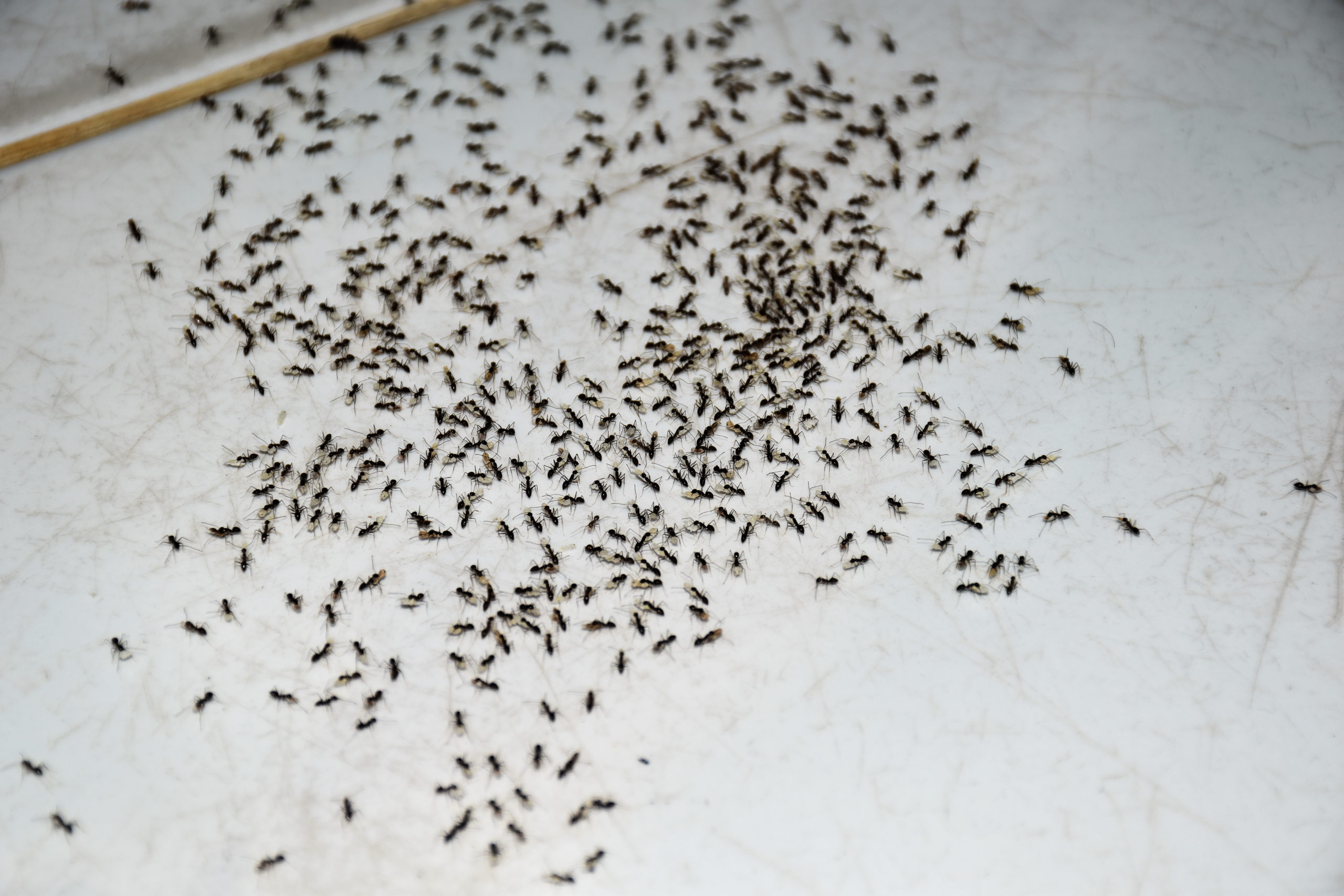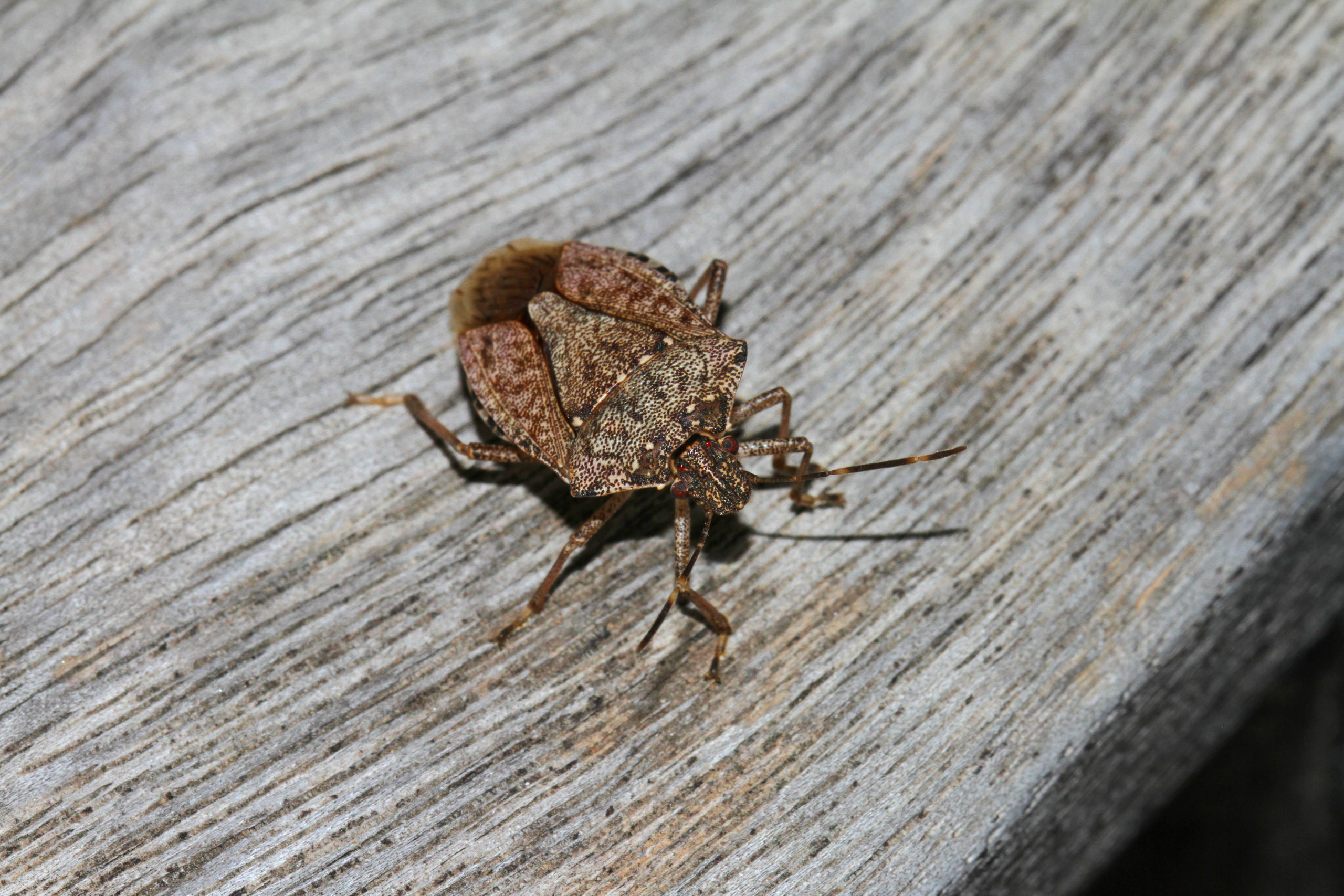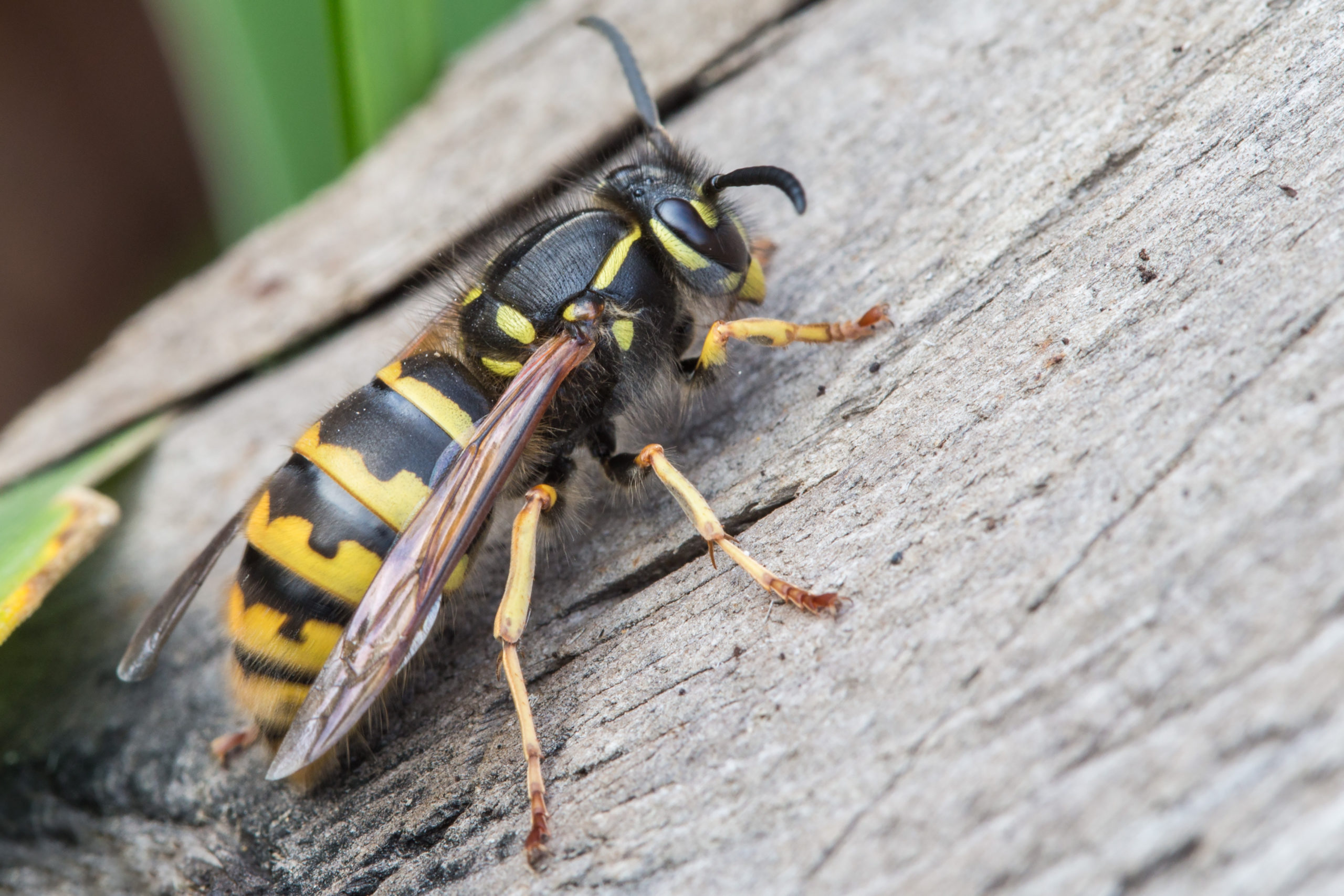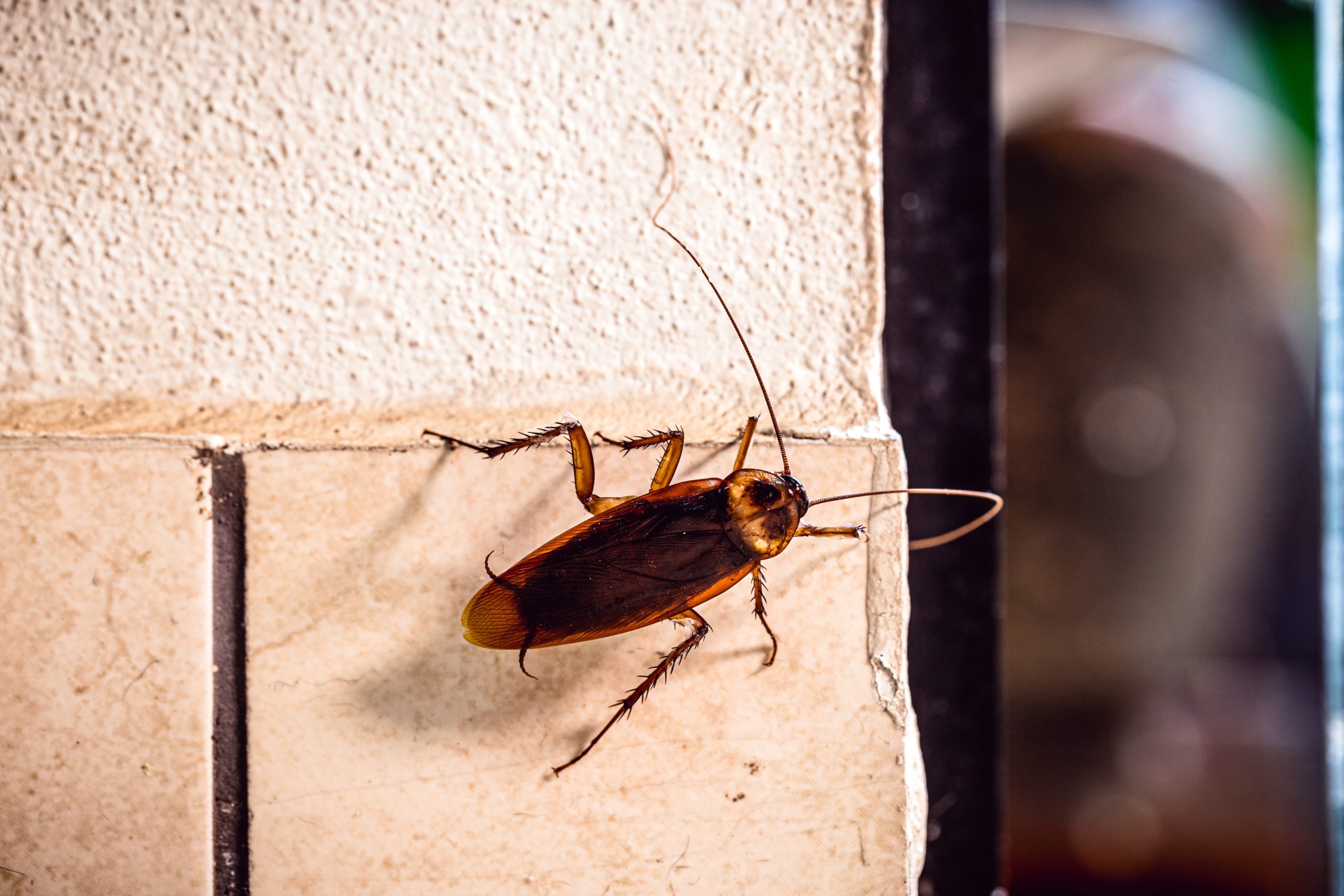From Carpenter Bees to House Ants: What’s Invading Your Home? Part 2
From Carpenter Bees to House Ants: What’s Invading Your Home? Part 2
Welcome to the second part of our mini blog series about the different invasion reasons and techniques of different pests! Many pest invasions share the same signs and pieces of evidence that alert homeowners to their presence. Small holes, droppings, and live pests all point to something strange going on, but there are even more specific signs that various pests leave when they invade a home. Let’s take a look at five more pests and why they choose to invade our houses, as well as how to prevent them from ruining your day with an infestation.
House Ants

This is more of a general term for ant species that are known to invade our homes, but they all do generally the same things. Ants are constantly searching for the best of the three main necessities most living beings need: food, water, and shelter, all of which they find in our homes. Worker ants will take a sample of the food (usually a sugar or protein) back to their colony to see how they like it, leaving a trail of pheromones along the way for the other workers to follow. This is how worker ants find every little crumb and spill we leave behind; they either find it first or follow the invisible trail of the other workers. The most distinct ant that invades our homes is the carpenter ant, as it functions more like a termite than a typical ant. Carpenter ants gnaw through wood and build their tunnels, which can be some costly damage to repair later if they stay for a long time. But no matter what ant species invades, it is guaranteed to be a time-consuming process in sanitizing and eliminating.
Signs of Infestation:
- Ants walking around and gathering food
- A trail of ants anywhere in the house
- Ant hill(s) in the yard outside
- Discarded wings from swarmers
- Slight rustling sounds near walls or hidden areas, like cabinets
- Small holes on a wooden surface with sawdust on the ground (carpenter ants)
Prevention Tips: Since the number one desire of ants seems to be food, the best way to prevent them from invading is to take away their targets. Clean up all crumbs and spills immediately by wiping counters with a damp cloth or antibacterial wipe. Keep all food and pet food stored properly by using containers with lids. Mop or sweep the floors, especially in the kitchen, to make sure there are no food remnants around. Also, as for any other pest, check for and seal any cracks and holes in the house. Keep plants trimmed back from the actual house, as ants often use these as a clear path up to the house. To prevent carpenter ants specifically, check for any water damage or moisture in the walls. They prefer softer wood to invade, so eliminating that possibility will certainly help keep them at bay.
Stink Bugs

This infestation is talked about less than the others, but it is still an unfortunate scenario that is not fun to handle. The most common species that invades homes every year is the brown marmorated stink bug, which seeks for a place to overwinter before the weather gets too bad. They start scoping out new places in the fall, and will invade a home in droves if they find an opening. These stink bugs love warmth and sunlight, so any home filled with both is right up their alley. They usually try to get inside the walls for maximum protection from any potential predators, so you likely won’’t see a lot of stink bugs running across the floor. But besides the horrifying idea of stink bugs living in the walls in general, the odor that these bugs emit when squished or threatened is not something you want trapped in the walls.
Signs of Infestation:
- Lots of stink bugs (dead or living) anywhere near the home
- Damage to food crops that was not there previously
- Many stink bugs resting in the sunny parts of the yard
- An odor near walls or windows, often likened to cilantro or herbs
- The sound of small insects scurrying in the walls
Prevention Tips: The homes most at risk for a stink bug infestation based on their preferences are the ones that have a lot of lights on at night, get plenty of sun during the day, and are located near some kind of field with crops that the bugs enjoy. If these descriptors fit your home, don’t worry! There are a few things you can do to prevent these pests from invading your space. Seal all cracks and holes in the house before the weather starts cooling off, as that is when the stink bugs start moving into their winter home. Caulk is the best for smaller jobs, and copper mesh can be utilized for larger holes. Also, make sure to repair any holes in window and slider door screens before opening them for fresh air. Smaller tears and holes can be patched with extra screen material, but if the whole screen is peppered with unwanted openings, it may be best to just replace the whole screen part altogether. Winter requires a lot of preparation in areas that get snow, so make checking for small entry points part of the prep process to prevent stink bugs from cozying up in your home.
Wasps

Wasps are essentially the more defensive and aggressive distant cousins of bees. Wasps also pollinate flowers and are more beneficial by feeding smaller pests to their young, but the fact that they can and will sting us repeatedly if their nest is disturbed is good reason to want them out of our yards. They are attracted to sweeter smells and protein-filled food, hence the dreaded meat bees at every barbecue, so outdoor gatherings may experience some uninvited guests. There are many different wasp species that we may see, but most of them have the same general characteristics of a thin waist, black stripes, and long legs. However, the location of the nest does differ depending on the species. Yellow jackets nest underground, paper wasps nest in a covered area, and hornets have huge nests that are high off the ground. But no matter what species of wasp, it is important to get the infestation taken care of before anyone inadvertently gets too close to the nest.
Signs of Infestation:
- Nest(s) in the yard
- Multiple wasps in the yard
- Wood damage near the nest
- Angry buzzing around flowers and trees
- Wasps crawling on patio covers and near the eaves
Prevention Tips: The easiest way to prevent wasps, and to know if you have an invasion, is to check for nests. No matter what kind of nest it is, it is important to spot them before anyone accidentally goes too close to it. If you do find a nest or two, it is best to have pest control technicians remove it since they have the proper equipment and protection to keep everyone safe. But besides the actual nests, keeping all trash cans covered should also prevent wasps from invading. They love trash cans for all of the different smells and spills, so taking their access away will cut down on the number of wasps in the yard. If you have any fruit trees or bushes in the yard, make sure to remove old or overripe fruit. These can attract all kinds of pests, including wasps, so it is very helpful to remove them as soon as possible.
Roaches

The fact that these pests have a stereotype of surviving a nuclear apocalypse is a testament to their durability, which is bad news for us. Most roaches are red-brown in color and anywhere from half an inch to 1.5 inches long. There are less than 30 species of cockroaches in the U.S. that will invade populated areas, but that is still a major problem for anyone who experiences an infestation. These nocturnal pests can ruin literally everything they touch in a number of ways. Roaches are constantly carrying diseases and harmful bacteria that can be dangerous for us, plus their droppings and egg cases can stain surfaces if left long enough. Basically, anything that a roach touches should either be thrown out or disinfected like never before.
Signs of Infestation:
- Strange oily, musty smell inside the house
- Egg casings near walls and on the ground
- Scurrying sound within the walls or cabinets, particularly at night
- Any roach, alive or dead
- Roach droppings that look like brown spots (the more there are, the larger the infestation)
Prevention Tips: Another frustrating factor of roaches is how efficient they are at spreading to nearby homes and yards from the original one. If your neighbors have a roach problem, there is a chance that this problem can leak over into your yard or home. Check for any cracks and holes in the home, especially if a roach issue is in the neighborhood, and seal them with caulk. Keep all inside and outside trash cans sealed with a lid, as the garbage is a roach’s favorite place. Take out the inside garbage when it is full to prevent overflow or rotting food from attracting roaches. Clean all crumbs and spills immediately, and clean the floors often to prevent forgotten food remnants from becoming a roach’s next meal.
Mosquitoes

If the summer had a pest mascot, the mosquito would definitely be in the running for that spot. They thrive in hot weather and reproduce even quicker, which means more mosquito bites for us. The only mosquitoes that can bite are females, and they really only do it when they need protein for their eggs. But if the weather is consistently warm, that means more female mosquitoes are laying eggs every day. They can lay eggs in damp soil, but mosquitoes prefer to lay eggs in standing water. This can be any amount of water: pond, lake, plant drainage trays, water in a vase, leaking pipes, and more. Even a tarp that collected rain after a summer storm is good enough for the mosquito! The itchy bites are bad enough, but the fact that some mosquitoes carry diseases like malaria and West Nile virus makes it even worse.
Signs of Infestation:
- Standing water in/around the home that looks like it has eggs in it
- Residents of the house getting bitten by mosquitoes repeatedly
- Mosquitoes hovering around food and the patio area
- Seeing mosquitoes near the home all day
- A high pitched buzzing sound (made by mosquitoes in flight)
Prevention Tips: Based on where mosquitoes lay their eggs, you can probably guess the best prevention tip. That’s right: remove any standing water that is not intentionally there, like a pond. Shake off tarps, dump out trays and outdoor toys, and fix any leaking pipes or gutters. Places that experience more humidity are also more likely to experience mosquito problems, so keep that in mind if you live in a humid climate. Citronella candles and essential oil can help keep the mosquitoes away for the most part, but they are not the most effective solution ever, especially for larger infestations. And, as for any pest, seal all cracks and holes in the house and screens to prevent mosquitoes from coming inside and bothering you there as well.
Pest Control is an Efficient Solution for All Pest Problems
No matter what pest is plaguing your home, pest control services are here to provide both preventative and responsive services for you. DIY solutions can work against small-scale invasions, but the real deal is often more efficient and personalized to the specific pest issues at hand. Our team of trained technicians are equipped to handle the infestations listed in this blog and more, as our main goal is always to leave you with a pest-free home when the visit is over. Contact our team to learn how our eco-friendly services can solve your pest problems and prevent pests from ruining your end-of-summer plans!
Citations
4 signs of a wasp infestation. (2022, January 24). Maggie’s Farm. Retrieved August 16, 2022, from https://maggiesfarmproducts.com/blogs/bug-help/signs-wasp-infestation
Allred, B. (2022, February 1). Cockroach infestation: How to tell if you have one (and how to fix it!). A-Z Animals. Available at https://a-z-animals.com/blog/cockroach-infestation-how-to-tell-if-you-have-one-and-how-to-fix-it/ (Accessed on August 16, 2022).
Carpenter ants. (n.d.). Pest World. Retrieved August 16, 2022, from https://www.pestworld.org/pest-guide/ants/carpenter-ants/
Causes and cost-effective ways to get rid of mosquito home infestation. (2021, November 24). Avalon. Retrieved August 16, 2022, from https://www.avalon-services.com.sg/causes-and-cost-effective-ways-to-get-rid-of-mosquito-home-infestation/#
Forney, J.M. & Feaster, F. (n.d.). Why are there so many stink bugs in my house?. HGTV. Available at https://www.hgtv.com/outdoors/gardens/animals-and-wildlife/why-are-there-so-many-stink-bugs-my-house (Accessed on August 16, 2022).
How to get rid of a mosquito infestation inside your home. (n.d.). MosquitoMax. Retrieved August 16, 2022, from https://www.mosquitomax.com/how-to-get-rid-of-a-mosquito-infestation-inside-your-home/
Lupo, L.J. (2022, July 21). How to get rid of ants in the house. The Spruce. Available at https://www.thespruce.com/how-to-get-rid-of-ants-2656468 (Accessed on August 16, 2022).
Miller, K. (2020, October 7). 6 reasons stink bugs are so attracted to your house, according to pest experts. Prevention. Available at https://www.prevention.com/life/a34192633/why-stink-bugs-are-attracted-to-your-house/ (Accessed on August 16, 2022).
Signs you have cockroaches. (n.d.). Ortho. Retrieved August 16, 2022, from https://www.ortho.com/en-us/library/bugs/signs-you-have-cockroaches
Stink bugs. (n.d.). Pest World. Retrieved August 16, 2022, from https://www.pestworld.org/pest-guide/occasional-invaders/stink-bugs/

